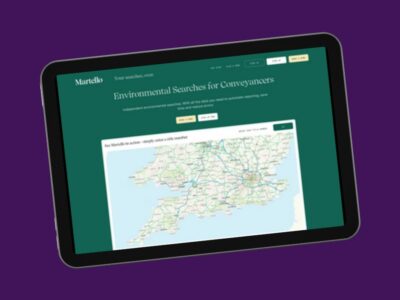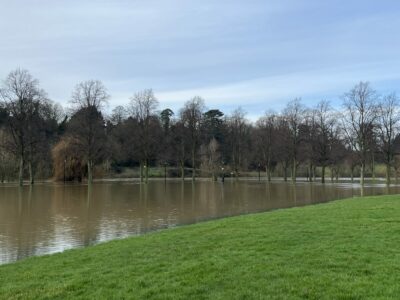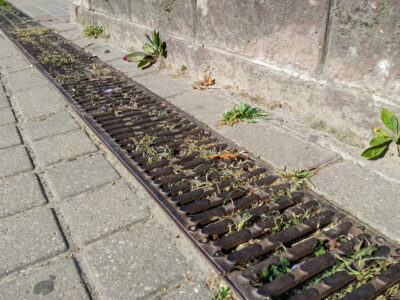London Sustainable Drainage Proforma Launched
From 1st April 2019, all London Lead Local Flood Authorities (LLFAs) now require planning applications to include a completed version of the London, SuDs, Sustainable Drainage Proforma. It sets a clear standard for the information that should be provided in a sustainable drainage strategy for developments in London.
The proforma is intended to ensure that key information is provided with the initial planning application, reducing the need to request additional information throughout the assessment process and preventing delays in approval.
This initiative is supported by the Greater London Authority (GLA) and the London Drainage Engineers’ Group (LoDEG) to encourage greater consistency in both the applications and the Lead Local Flood Authority information requests.
This does not change each of the London Boroughs’ existing requirements from their local policies. It is important to continue to verify local requirements as part of pre-planning and master planning engagement.
The aim is to get standardisation on the method of presenting the information. In addition, The London Plan for Sustainable Drainage forms a consistent basis for the type of information required at planning and is an important first reference point.
Key Aspects
The proforma has been created for major applications (10 dwellings or 1000m2> of commercial development) but LLFAs will decide on an individual basis if they wish to apply it to minor developments. It is to be used for outline planning and detailed planning applications, although it is accepted that the level of information may be less accurate at outline stage.
The proforma also encourages a review of infiltration feasibility and potentially an initial site investigation to establish the depth of the groundwater. This can be achieved through desktop studies initially, such as with the national groundwater data and SuDs infiltration maps contained in our drainage assessments. When more detailed drainage designs are required at full planning stage, then a more comprehensive assessment approach, such as boreholes or trial pits, may be required. GeoSmart can also assist with these services.
On infiltration rates, mapping data may be suitable in the first instance for the majority of Boroughs, but the LLFA will be the final arbiter. It is important not to make assumptions on the type of soil geology. A site may have bedrock of London Clay, which may not always be suitable to receive surface water due to lower permeability. However, this shouldn’t preclude it from infiltrating into any suitable overlying superficial deposits if they are in the vicinity. Therefore, getting site specific data is critical as early as possible.
The proforma contains sections on drainage hierarchy, proposed discharge details, discharge rates, and the proposed SuDS features. This information is then drawn together to provide the drainage strategy for the site, with other supporting details such as site layout and a maintenance schedule.
A competent drainage strategy will include the available options for discharge in order of preference, starting with: storage for later use; infiltration to ground; storage in open water features or buried tanks and slow release to water courses. Discharge to a combined sewer will be considered if other options are not feasible.
A feature of the proforma refers to required storage volumes for water attenuation (holding back water from entering drainage systems to rapidly and causing flooding). These relate to the Critical Storm Duration, which is the measure for a model storm which results in the highest flood discharges or flood elevations for the flooding source.
Unless stated otherwise, this will be the principle requirement by the LLFA in calculations to measure the impact of the site development and the capacity of any SuDS to deal with surface water flooding. Having established the volumes to be handled and the proposed discharge route the proforma prompts assessment of a range of suds features to manage the rainfall run-off. Options include: blue and green roofs; filter strips and drains; bioretention areas; permeable pavements; swales; ponds; basins and attenuation tanks.
A Consistent Approach – not just about “Viability”
There is an important balance to be struck on the degree of investment by developers on site investigation and SuDS design/install vs. the size of the development.
Architects, planning consultants and their developer clients need to be careful not to protest about “viability” issues, especially on larger sites. Boroughs and LLFAs want investigation costs to be proportionate, but they will also want the developer to provide clear evidence as to why some requirements cannot work on their site.
The important point to stress is that Boroughs and LLFAs want to get consistent information in order to achieve planning permission. Developers need to have a full understanding of the likely costs and benefits associated with incorporating SuDS and to factor that into the site design, land purchase values (and yield potential) from the outset. If well designed, a good sustainable drainage strategy can add value to a site and reduce maintenance costs compared to traditional concrete and pipe drainage schemes.
A Helping Hand
We have a strong track record in assisting architects, planning consultants and developers achieve Local Authority and LLFA acceptable standards for flood risk management and sustainable drainage. By liaising with the Local Authority and considering local drainage profiles, geology, fluvial and surface water flood histories, we can propose the most effective and practical SuDS design solution as part of the pre-planning and master planning submissions.
Our drainage reports help our clients understand the best land management strategy and can be used in conjunction with our flood risk (FRAs) and contaminated land reports. We are also able to offer more detailed run off calculations and offer preliminary SuDS designs based on the site’s unique characteristics.
For more information, call us on 01743 298 100 or email enquiries@geosmartinfo.co.uk



